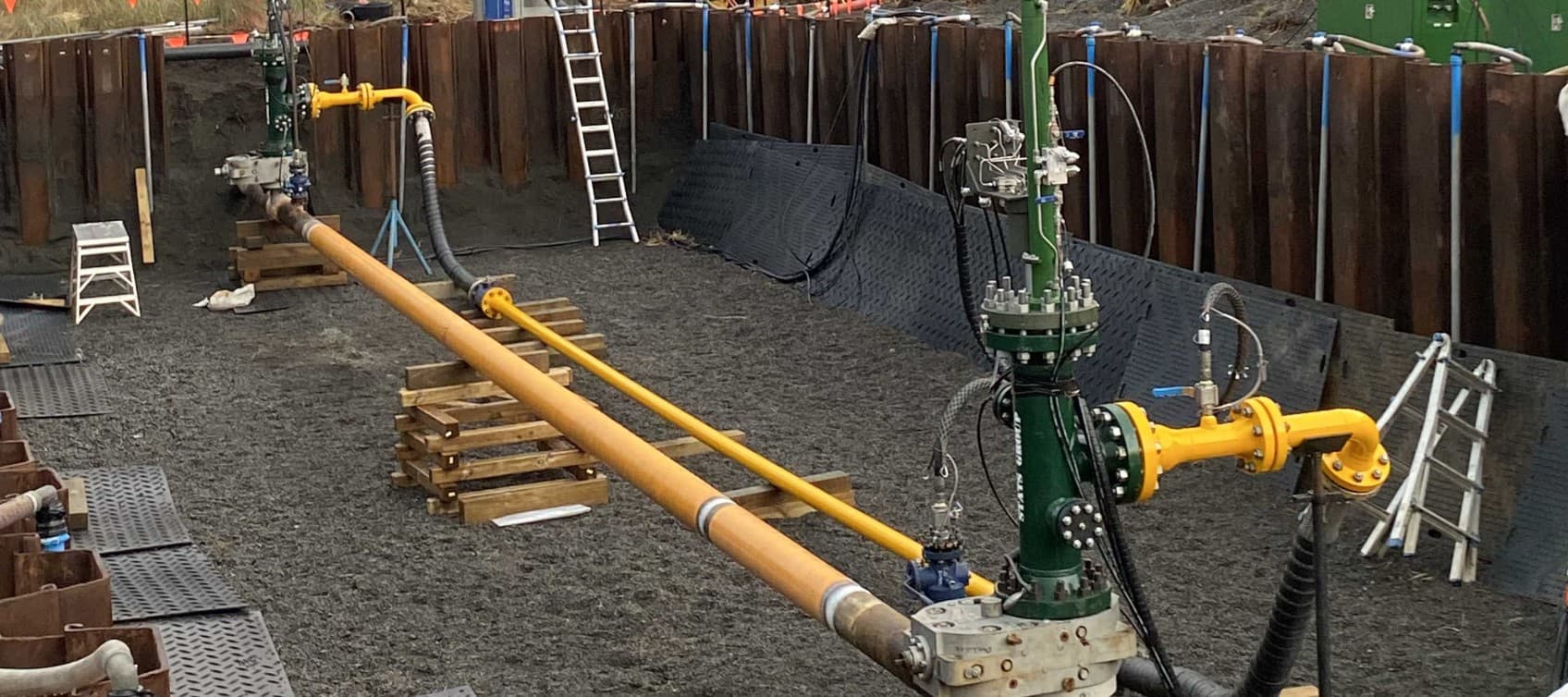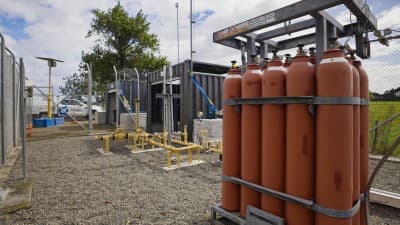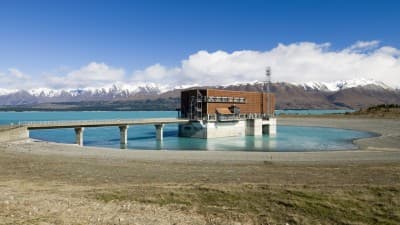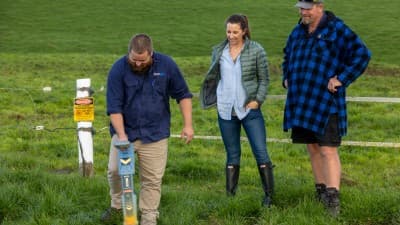At Firstgas, our job is to keep the gas flowing safely and reliably to over 300,000 homes and businesses across the North Island. That means making sure our pipelines are always in top condition. When we identify a section of pipeline that needs replacing, we act quickly. In the past, that sometimes meant shutting off the gas supply, while our team cut out the damaged section and installed a new one.
Firstgas have now invested in a new tool called a STATS BISEP (Branch Installed Self Energised Plug) - the first of its kind to be used in New Zealand - that will reduce the need for planned outages by improving safety for our repair teams and cutting down on gas loss.
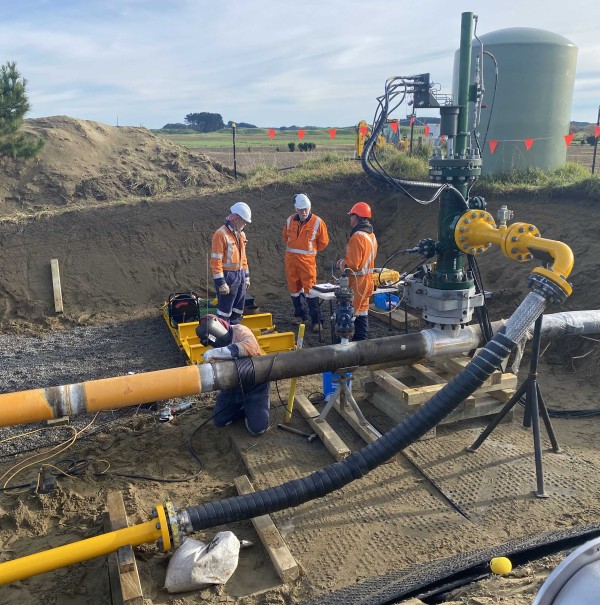
Firstgas team working with the BISEP tool
How it works
The BISEP tool connects to two points on the pipeline, known as Hot Taps. Once in place, the tool is inserted through the Hot Tap and safely shuts off the gas flow at each connection point. It then monitors both points to ensure the gas is fully and securely sealed off. While repairs are carried out, gas is redirected through a bypass line, allowing us to replace the damaged section of pipeline without interrupting supply.
“Replacing sections of gas pipeline is a high-risk activity,” explains James Graham, Manager of Specialist Trades at Firstgas. “The traditional method is tried and tested, but we were looking for a safer, more efficient solution. We’ve now used the BISEP tool twice in the field and it has worked exactly as intended. In both cases, we had defects in the pipeline that needed to be cut out and replaced. Using the isolation tools, we installed a bypass and replaced the damaged sections without any interruption to gas supply.”
Previously, a stopple was used to plug the pipeline when a section needed to be isolated. However, stopples have limitations, and they don’t always form a complete seal, especially if the pipe is a slightly different shape or has a significant internal weld seam. As a result, the team had to allow for a certain level of gas leakage. The BISEP tool, by contrast, is more adaptable and creates a reliable seal, even on less-than-perfect pipes.
"In the past, we had to accept minor gas leaks. But now with our new tools, it’s zero,” says Graham. “Using the BISEP is more complex than the traditional stopple method, but it’s worth it. You get the confidence of a 100 percent seal, confirmed before depressurising the pipeline and monitored throughout the entire job. On our most recent job, there was a difficult internal weld seam that stuck out quite a bit, and we were unsure whether we would get a 100 percent seal. A stopple would definitely have leaked. But the BISEP sealed perfectly the first time. The welders downstream love it, and they have confidence in the isolation, plus we know that we’ve significantly minimised the risk.”
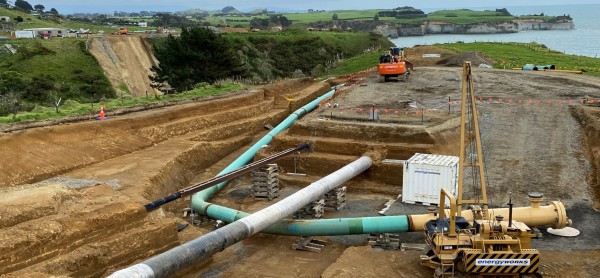
Photo: Gilbert Stream realignment of the Maui Pipeline on the North Taranaki Coastline.
Fewer outages, lower emissions
With the BISEP tool creating safer conditions for pipeline repairs, the number of planned outages required for maintenance can now be kept to a minimum. This is a notable improvement from three years ago, when a similar project to realign the Maui pipeline at Gilbert Stream on the North Taranaki Coast required a weekend-long shutdown.
At that time, 60 kilometres of pipeline had to be isolated between valve stations, leading to both a supply interruption and gas loss. For future jobs using the BISEP, only a small section of pipeline will need to be isolated at the worksite itself, allowing us to continue supplying gas uninterrupted and reducing the emissions associated with the process.
“The BISEP tool reduce risks and improves safety, helps us keep gas flowing to our customers, and supports our efforts to lower emissions from our operations. This is why we have invested in the tool”.
A journey from Australia to Aberdeen to Abu Dhabi
Trained as an electrician, Graham has spent his career in Taranaki’s energy sector and says he loves his job. Over nearly three years, he’s led the effort to secure the BISEP tool for Firstgas, after first seeing its potential at a trade show in Brisbane.
Graham and two of his lead technicians later received specialised training at the STATS Group centre in Aberdeen, followed by a visit to the factory in Abu Dhabi to observe the tools in action during testing.
It’s been hugely satisfying for Graham to see the BISEP tool through from planning to in-field use, in Taranaki.
“After working on this for years, I know a lot about it but it’s hard to explain exactly what it is and what it does,” he says. “It’s technically complex, but the idea is simple. It makes this type of work much safer, and it helps us reduce emissions. It’s a win–win.”
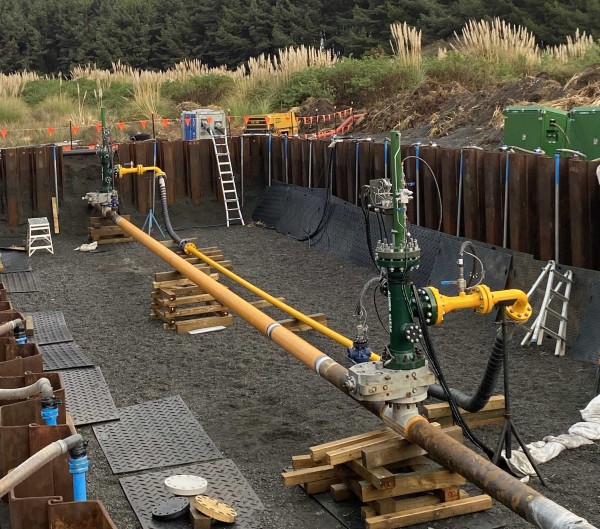
The BISEP tool, the first tool of its kind in the country.
How the BISEP tool could help your business
The BISEP tool marks a significant step forward to address complex pipeline repairs that can be managed safely and efficiently. As the first operator to bring this technology into the country, Firstgas is open to sharing insights and discussing its benefits with other gas pipeline owners who may be facing similar challenges around maintenance, safety and emissions reduction.
To learn more about how the BISEP tool could benefit your business please contact: Email - james.graham@firstgas.co.nz.

